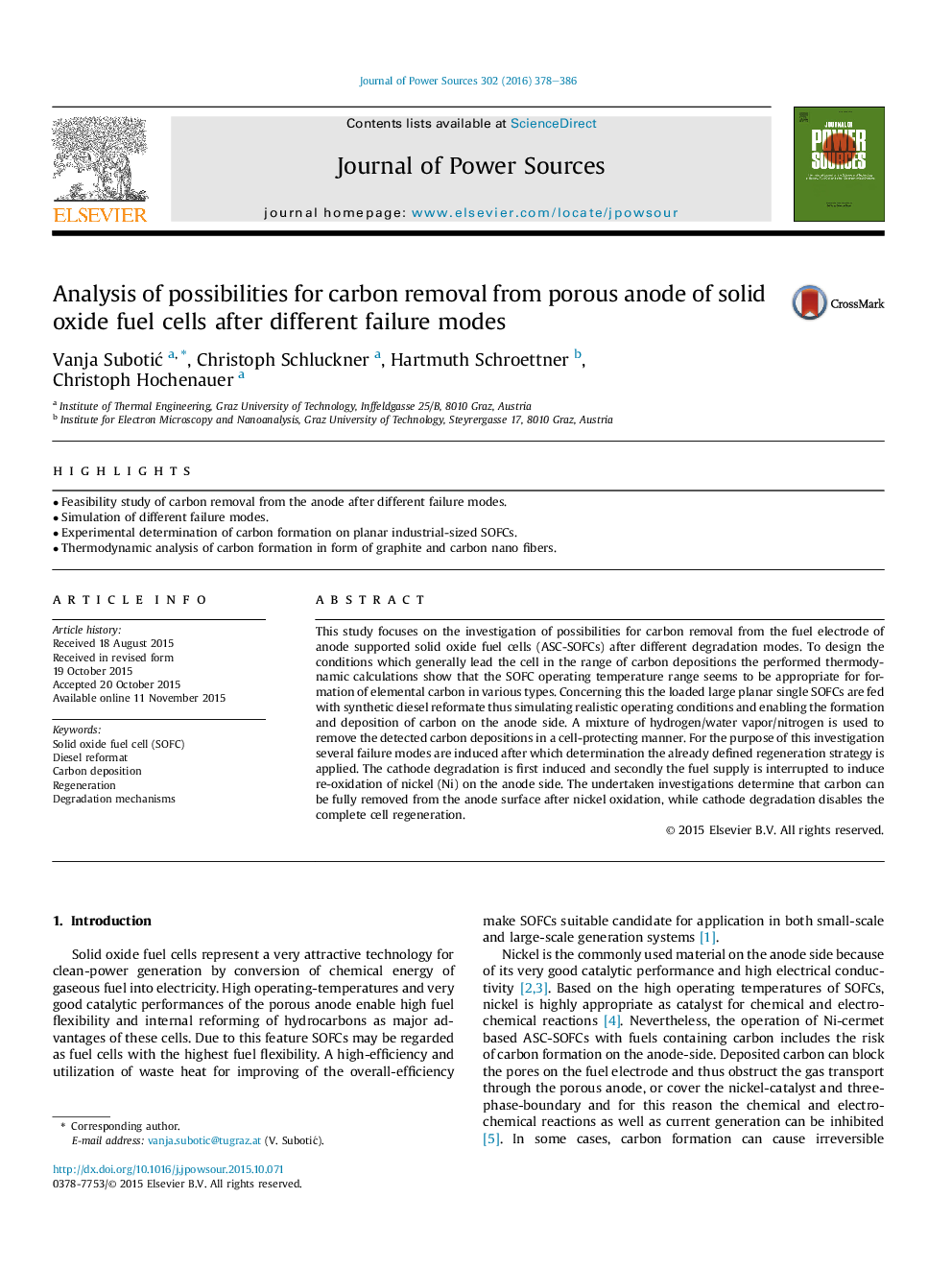| Article ID | Journal | Published Year | Pages | File Type |
|---|---|---|---|---|
| 7729802 | Journal of Power Sources | 2016 | 9 Pages |
Abstract
This study focuses on the investigation of possibilities for carbon removal from the fuel electrode of anode supported solid oxide fuel cells (ASC-SOFCs) after different degradation modes. To design the conditions which generally lead the cell in the range of carbon depositions the performed thermodynamic calculations show that the SOFC operating temperature range seems to be appropriate for formation of elemental carbon in various types. Concerning this the loaded large planar single SOFCs are fed with synthetic diesel reformate thus simulating realistic operating conditions and enabling the formation and deposition of carbon on the anode side. A mixture of hydrogen/water vapor/nitrogen is used to remove the detected carbon depositions in a cell-protecting manner. For the purpose of this investigation several failure modes are induced after which determination the already defined regeneration strategy is applied. The cathode degradation is first induced and secondly the fuel supply is interrupted to induce re-oxidation of nickel (Ni) on the anode side. The undertaken investigations determine that carbon can be fully removed from the anode surface after nickel oxidation, while cathode degradation disables the complete cell regeneration.
Related Topics
Physical Sciences and Engineering
Chemistry
Electrochemistry
Authors
Vanja SubotiÄ, Christoph Schluckner, Hartmuth Schroettner, Christoph Hochenauer,
